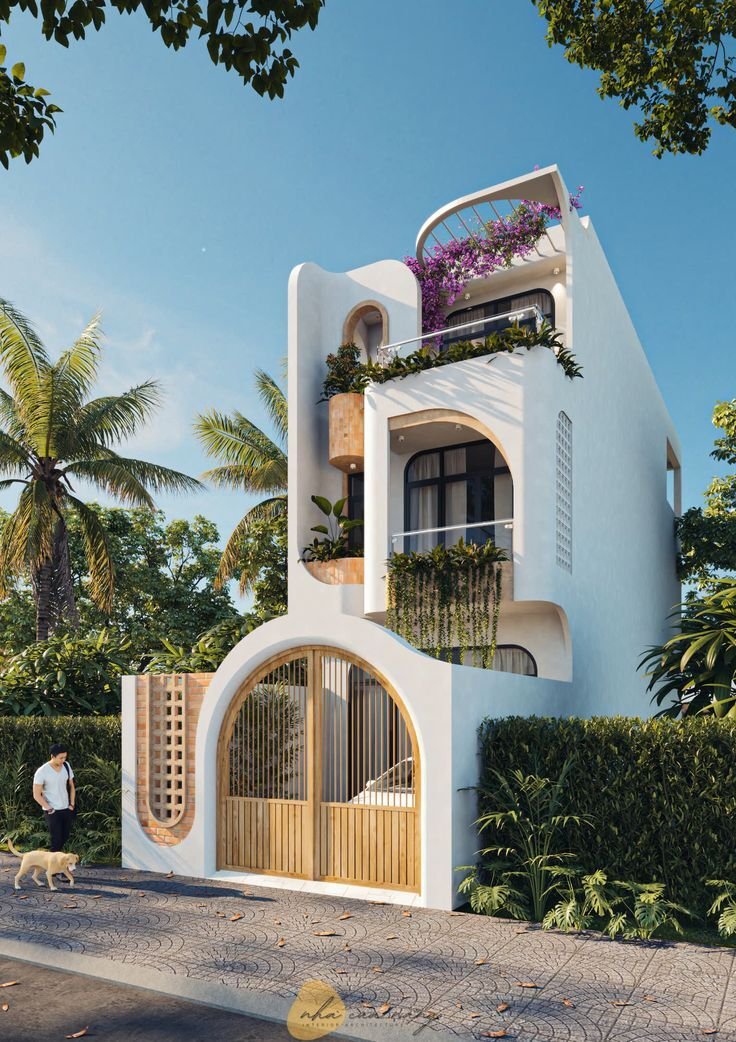Parametric design is revolutionizing the way architects approach and create modern buildings. It allows for a level of complexity and fluidity in architectural forms that was previously unimaginable. By leveraging computational algorithms and advanced software, parametric design enables architects to explore dynamic, complex geometries and optimize their designs for both aesthetics and functionality. This approach is not just changing the look of our urban landscapes but is also pushing the boundaries of innovation and efficiency in architecture.
What is Parametric Design?
At its core, parametric design refers to a process in which parameters (variables) are used to define and influence the design of a structure. Instead of manually drawing each part of a building, architects input specific parameters—such as material properties, environmental factors, or structural load limits—into computer software, which then generates a variety of design possibilities. The architect can adjust these parameters to explore different configurations and optimize the design based on specific goals, such as sustainability, cost-efficiency, or structural performance.
This method allows for the creation of forms that are responsive to external factors like wind flow, sunlight, and temperature, resulting in buildings that are not only visually striking but also functional and efficient.
Key Features of Parametric Design
Complex Geometries Parametric design allows architects to create highly intricate and fluid forms that would be difficult or impossible to achieve using traditional design methods. By adjusting parameters and using algorithms, architects can explore designs that incorporate organic shapes, asymmetry, and highly detailed facades.
Data-Driven Design Parametric design is rooted in data. Architects can input a wide range of variables—from environmental data to user behavior—and use these to generate designs that are optimized for specific needs. This approach ensures that buildings are responsive to real-world conditions, whether it’s optimizing for energy efficiency or creating spaces that enhance user comfort.
Flexibility and Adaptability One of the most significant advantages of parametric design is its flexibility. As project requirements evolve or new constraints are introduced, architects can quickly adjust the parameters to update the design, rather than starting from scratch. This makes it easier to explore multiple design options and iterate on ideas more efficiently.

How Parametric Design is Shaping Modern Architecture
1. Futuristic and Organic Forms
Many of the most iconic buildings of the 21st century have been made possible by parametric design. These structures often feature flowing, organic shapes that mimic natural forms, giving them a futuristic appearance. For example, the Heydar Aliyev Center in Baku, designed by Zaha Hadid Architects, features sweeping curves and fluid surfaces that seem to defy gravity. The building’s sinuous, wave-like form was made possible through the use of parametric tools that allowed the architects to explore and refine the complex geometry.
Similarly, the Beijing National Stadium (the “Bird’s Nest”) designed for the 2008 Olympics showcases a unique, lattice-like structure. The complex geometry of the stadium, which combines both form and function, was achieved through parametric design, allowing the architects to balance aesthetics with the structural requirements of a large-scale venue.
2. Optimized for Environmental Performance
Sustainability is a critical consideration in modern architecture, and parametric design is proving to be a powerful tool in this regard. By simulating environmental conditions and integrating real-world data, architects can create buildings that are optimized for energy efficiency. For instance, parametric design can help determine the best orientation for a building to maximize natural light while minimizing heat gain, or to create façades that regulate airflow and reduce the need for mechanical cooling.
The Al Bahar Towers in Abu Dhabi exemplify this approach. The towers feature a dynamic façade that adjusts in response to the sun’s movement, helping to reduce solar gain while providing shade to the building’s interior. The design was generated using parametric tools that analyzed the sun’s path and created a façade system that adapts to changing environmental conditions.
3. Customized and Tailored Spaces
Parametric design also allows for a high degree of customization in architecture, enabling architects to create spaces that are uniquely tailored to specific user needs. By analyzing data related to human behavior, traffic patterns, or the specific functions of a space, architects can generate designs that optimize the flow and usability of a building.
For example, in the design of airports, parametric tools can analyze pedestrian movement patterns to create more efficient layouts that reduce congestion and improve user experience. Similarly, in residential architecture, parametric design can be used to customize living spaces to suit individual preferences or lifestyle needs, making homes more functional and personalized.
Parametric Design in Urban Planning
Parametric design is not limited to individual buildings; it is also transforming urban planning. By inputting large-scale data related to transportation, population growth, and land use, parametric tools can help planners visualize how different urban configurations will impact the functionality of a city. This allows for more informed decision-making when it comes to zoning, infrastructure development, and the creation of public spaces.
For example, parametric design can simulate how changes in road networks will affect traffic flow or how the introduction of green spaces will impact air quality. These insights enable planners to create more sustainable, livable cities that are better equipped to handle the challenges of rapid urbanization.
The Future of Parametric Design
As technology continues to evolve, parametric design is expected to become even more sophisticated. The integration of artificial intelligence (AI) and machine learning will further enhance the capabilities of parametric design tools, allowing architects to explore even more complex forms and solutions. AI can analyze vast datasets and optimize designs based on factors like energy use, material efficiency, and cost-effectiveness, leading to smarter, more sustainable architecture.
In addition, advances in construction technologies, such as 3D printing and robotics, are making it easier to bring parametric designs to life. These technologies allow for the precise fabrication of complex geometric forms that would be difficult to achieve with traditional building methods.
Challenges and Considerations
While parametric design offers many benefits, it also presents some challenges. The reliance on advanced software and computational tools means that architects need to have a deep understanding of both design and technology. Additionally, the complexity of parametric designs can sometimes lead to increased construction costs, as specialized materials and techniques may be required.
However, as parametric design tools become more user-friendly and construction technologies advance, these challenges are likely to diminish, making parametric design more accessible to a wider range of architects and builders.
Conclusion
Parametric design is pushing the boundaries of modern architecture by enabling architects to explore new forms, optimize designs for environmental performance, and create customized spaces that respond to real-world data. As technology continues to advance, the potential for parametric design to shape the future of architecture is immense. From futuristic skyscrapers to sustainable urban developments, parametric design is paving the way for more innovative, efficient, and responsive buildings that meet the needs of both today and tomorrow.


